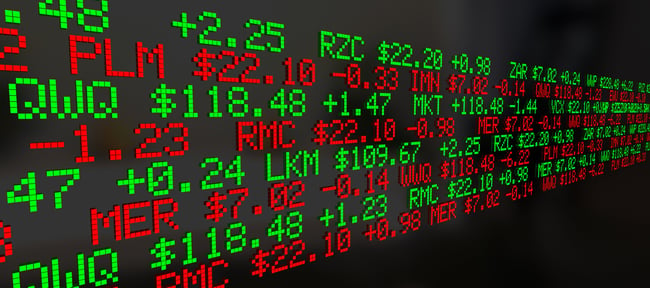Latest Posts
Your money should work for you.
Get the latest tips on how to plan for retirement and make better financial decisions.
Don't worry... we will NOT spam you!

We would like to take this opportunity to share with you some of our observations and perspective regarding recent market movement. The long anticipated market correction has finally occurred. For the first time since October 2011, the S&P 500 Index experienced a pullback of over 10%. It was an amazing run, and at over 1400 days, it was the 3rd longest streak in history without a 10% correction.
In 2015, Wall Street has faced a rotating wall of worry. The year started with investors debating when the Federal Reserve would begin raising interest rates. In the spring, the focus turned to the nonstop drama in Greece and the potential of a Greek exit from the Euro. This summer, the attention shifted to China, as the world’s second largest economy was showing signs of stalling. Ultimately, the worries about Greece dissipated, but the concerns about the timing and impact of a U.S. rate hike resurfaced at the same time a sharp decline in China’s equity markets ignited fears about the country’s economic health. That combination, involving the world’s two largest economies, sent traders to the sidelines, resulting in the S&P 500 entering correction territory for the first time in almost four years.
Stanley Fischer, Vice Chairman of the Federal Reserve said the following at a speech on May 25, 2015 in regards to raising interest rates: “What we are thinking about is raising the interest rate from zero, which is an ultra-expansionary monetary policy to a quarter percent, which is an extremely expansionary monetary policy. This will be a gradual process." He could not be any clearer in his message. In a sense, they are going from an open bar easy monetary policy to a ten drink minimum. Here’s our Nike style advice to the Federal Reserve: just do it! Rip the band-aid off and get it over with. We believe Wall Street has been overreacting; a move from zero to .25% is not the start of a tightening cycle designed to slow down the economy. The U.S. economy is strong enough to withstand a minimal .25% move off zero. The endless debate around a slight rate increase has become an unnecessary distraction that needs to end.
The Chinese situation is more complicated. China is in the midst of shifting from an export led high growth economy to a slower growing consumption based economy that will rely more on private enterprise and domestic consumption. This will be a difficult transition, but one that has a lot of potential. In the U.S., domestic consumption represents 70% of our economy while in China, domestic consumption represents only 35% of their economy leaving a lot of room for growth. While there is no doubt that China’s economy is slowing, there is an active debate as to the extent of the slowdown. The bullish camp believes that China’s economy, while slowing from its historical growth rate, is still growing at an enviable three plus percent rate. The bearish camp believes China is a recession bound house of cards and that their problems indicate that global growth is slowing. Our stance is it’s too early to make a definitive call on China and expect the news out of the country will continue to disrupt the global markets.
What does all this mean for investors? This will take time to play out so investors need to be patient. While we have enjoyed a nice rebound off of last Tuesday’s lows, we expect the daily dramatic price swings to continue until we get more clarity on the direction of interest rates in the U.S. and news out of China that shows their economy is stabilizing.
There continues to be a lot of positives that support the case for owning equities for the long-term.
-
GDP Growth – U.S. 2nd quarter 2015 GDP growth was 3.7Overall optimism over a growing U.S. economy. Despite the strength of the dollar hampering exports and the earnings of the multi-nationals, most believe the U.S. economy will continue its post credit crisis recovery.
-
A Strong Jobs Market – Employers added 215,000 jobs in July continuing the medium term trend of above 200,000 average monthly growth. The June report was revised up to 231,000 from 223,000. The May report was revised up to 260,000 from 254,000. The unemployment rate stands at 5.3%.
-
Energy Prices – Falling energy prices are a massive boost for economies that are net importers of energy.
-
Inflation – Still low, and should remain low with commodity prices dropping. This should allow the Feds to keep rates on the historically low side which will benefit the markets.
-
“The Great Refinancing of America” – We’ve mentioned this before. This doesn’t get the press it deserves. The monthly savings from refinancing continues to filter into the economy and will for the foreseeable future. This is the gift that keeps on giving. Low mortgage payments in relation to income frees up cash flow to spend on consumer goods.
We have finally had the correction we have been talking about. The lows set on Tuesday, August 25th, will probably be retested and that process usually plays out over several months. For the long-term investor, nothing has changed. Your own risk tolerance and long-term goals should dictate your asset allocation decisions, not the daily, or even monthly, gyrations of the markets. While it may be intriguing to try and time the market by trading in and out to maximize profits, our experience informs us that it’s too difficult to successfully and consistently outguess the markets.
As always, we appreciate hearing your comments and questions.
Source: Bloomberg Business



